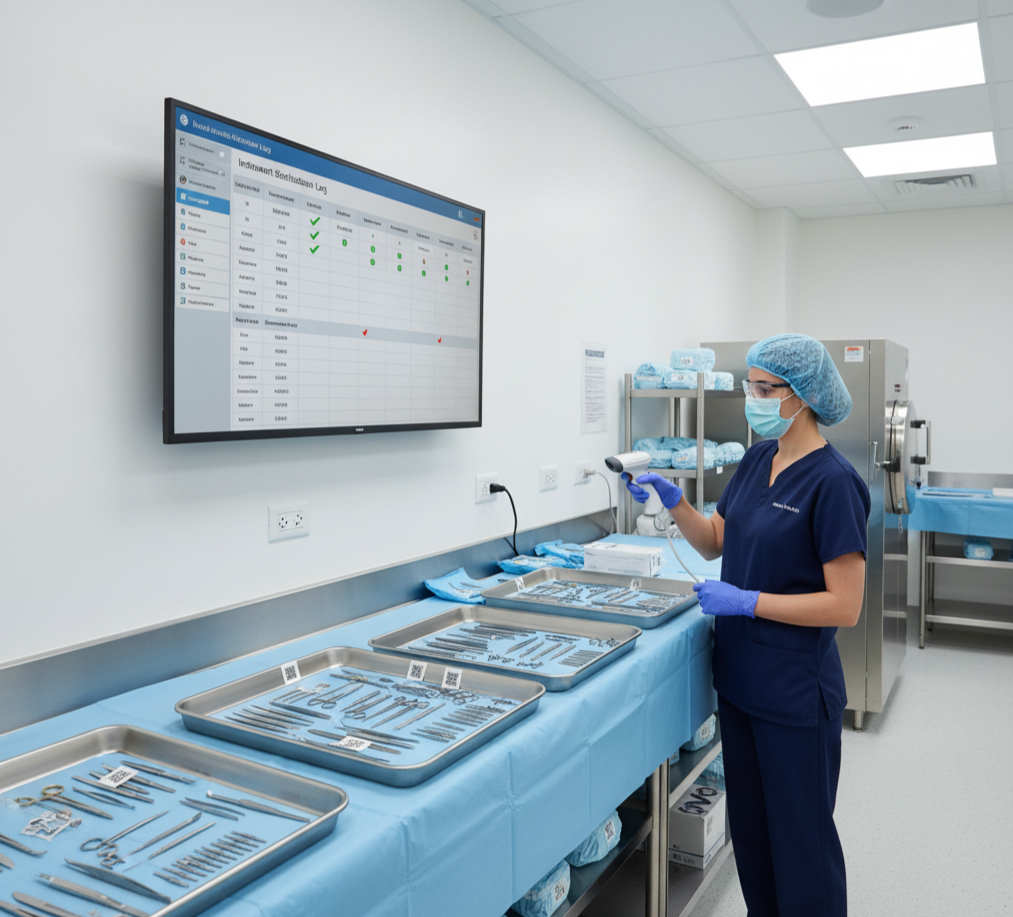Introduction
In modern healthcare, surgical procedures rely on precision, safety, and efficiency. Surgeons cannot perform at their best without the right instruments, and hospitals cannot ensure patient safety unless those instruments are properly tracked and maintained. This is where the surgical instrument tracking system comes in.
A surgical instrument tracking system is a software and hardware solution that helps hospitals track, manage, and maintain surgical instruments throughout their entire lifecycle—from sterilization and storage to usage in the operating room. This article explores its importance, benefits, features, and how it is transforming the healthcare industry.
What Is a Surgical Instrument Tracking System?
A surgical instrument tracking system is a digital solution that uses barcodes, RFID (Radio-Frequency Identification), or QR codes to track instruments. These systems record every detail, including:
- Instrument location (sterilization unit, OR, storage).
- Usage history and maintenance requirements.
- Sterilization cycles and compliance checks.
- Loss, damage, or replacement needs.
By automating tracking, hospitals reduce errors, save time, and ensure compliance with strict healthcare regulations.
Why Hospitals Need a Surgical Instrument Tracking System
H2: Improved Patient Safety
One of the biggest risks in surgery is the possibility of a retained surgical item (RSI). Tracking systems ensure every instrument is counted before and after procedures, minimizing this risk.
H2: Regulatory Compliance
Healthcare authorities require hospitals to follow strict sterilization and traceability standards. A surgical instrument tracking system helps meet FDA, ISO, and Joint Commission requirements.
H2: Cost Savings
Replacing lost or damaged instruments is expensive. With tracking, hospitals can monitor instrument life cycles and repair tools before replacement is necessary.
H2: Increased Efficiency
Nurses and technicians spend less time searching for instruments, as the system provides real-time location and availability updates.
Features of a Surgical Instrument Tracking System
H2: Barcode and RFID Technology
H3: Barcode Tracking
Each instrument is labeled with a barcode scanned during sterilization, storage, and usage.
H3: RFID Tracking
Radio-frequency tags allow wireless tracking, offering faster scanning than barcodes.
H2: Instrument Lifecycle Management
The system records every stage of the instrument’s journey, including:
- Sterilization cycle history.
- Repair and maintenance records.
- Number of times the instrument has been used.
H2: Real-Time Data and Reporting
Hospitals can generate reports on:
- Inventory status.
- Missing instruments.
- Usage frequency.
- Instrument expiration or maintenance schedules.
H2: Integration with Hospital Systems
Surgical instrument tracking systems integrate with:
- Electronic Health Records (EHRs) for patient traceability.
- Sterile Processing Department (SPD) software for sterilization.
- Inventory management systems for supply chain efficiency.
Benefits of Surgical Instrument Tracking System
H2: Enhanced Patient Care
Accurate tracking reduces surgical delays and ensures every procedure has the correct instruments ready.
H2: Time Efficiency for Staff
Nurses and SPD staff spend less time manually counting instruments and more time focusing on patient care.
H2: Reduced Risk of Infection
Tracking ensures instruments go through proper sterilization cycles before reuse.
H2: Financial Savings
Hospitals avoid costly instrument loss, duplication, and unnecessary purchases.
Challenges in Implementing Surgical Instrument Tracking Systems
H2: High Initial Costs
Installing RFID tags, barcoding systems, and software can be costly for smaller hospitals.
H2: Training Staff
Nurses, technicians, and sterilization teams need training to use the system efficiently.
H2: Technology Integration
Not all hospitals have compatible IT infrastructure, making system integration a challenge.
Future of Surgical Instrument Tracking Systems
The future looks promising as AI (Artificial Intelligence) and IoT (Internet of Things) become part of healthcare. Upcoming trends include:
- Smart sensors for real-time sterilization checks.
- Cloud-based systems for easy data access.
- AI-powered analytics for predicting instrument replacement needs.
These innovations will further enhance the efficiency and safety of surgical instrument tracking.
FAQs on Surgical Instrument Tracking System
1. What is a surgical instrument tracking system?
It is a digital solution using barcodes or RFID to track, manage, and maintain surgical instruments throughout their lifecycle.
2. Why is it important in hospitals?
It improves patient safety, ensures compliance, reduces costs, and increases efficiency.
3. What technology is used in tracking systems?
Barcodes, RFID tags, and software dashboards.
4. Can it prevent lost instruments?
Yes, real-time tracking and reporting reduce the chances of lost or misplaced instruments.
5. Do small clinics also need this system?
While more common in large hospitals, small clinics benefit from tracking by improving organization and reducing costs.
Conclusion
A surgical instrument tracking system is more than just a technology—it is a necessity for modern healthcare. By ensuring that instruments are properly sterilized, counted, and tracked, hospitals reduce risks, save costs, and improve efficiency.
As technology advances, surgical instrument tracking systems will continue to evolve, becoming smarter, faster, and more integrated into healthcare operations. For hospitals aiming to provide the best patient care while optimizing resources, investing in a surgical instrument tracking system is a smart choice.

